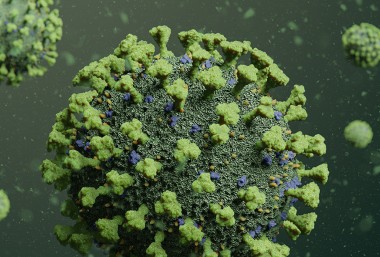Over 70 vaccines and 150 drugs are currently being developed by various entities in an effort to combat the COVID-19 pandemic. Any COVID-19 related technology is likely to attract intellectual property (IP) protection, especially in the form of patents that protect the functionality of a product or process.
Patent-pooling, compulsory licensing, and other legislative and non-legislative efforts have all been proposed in an effort to change how the international community approaches patent rights in the face of the global health crisis. However, despite various parties calling for such change, it appears that conventional licensing arrangements in parallel with existing patent systems remains the best path forward for tackling patent concerns in relation to COVID-19.
Patent pooling
As far back as May 2020, countries such as the UK and the US had already rushed to broker deals for preferential supply of potential vaccines. Preferential supply requires strict enforcement of patent rights, which in turn allows a company to recuperate at least part of the extensive costs of developing, testing and trialling such drugs.
However, the World Health Organisation (WHO) has been advocating since May for equal access to COVID-related technologies through the implementation of the WHO Technology Access Pool (C-TAP). The C-TAP includes provisions for patent pooling.
Patent pools are arrangements where collections of patents are more easily navigated through simplified licensing schemes. Groups of related patents can be collated to form a sort of ‘one-stop’ shop for commercial partners wishing to license patent-protected technology. Patent pools have been used successfully in the past, for instance, to quickly develop drugs in response to the 90s HIV epidemic.
Arrangements for a patent pool such as C-TAP would need to be quickly agreed upon, to avoid a repeat of the 2005 SARS patent pool, which saw the epidemic largely end before the pool could be effectively utilised. This was due, in part, to the large delay between patent filing and grant, since most of the patents suggested for inclusion in the SARS patent pool were newly filed but needed to be granted before licensing schemes could be formed.
C-TAP has also received some criticism for its focus on open-access patent licensing arrangements. Several parties have commented that such arrangements would nullify any incentive to produce expensive technologies in the absence of affirmable IP rights.
Compulsory licensing and Crown use
Some governmental attitudes nonetheless appear to be changing to allow for rapid deployment of COVID-related technologies. For instance, Germany and Canada have both enacted new legislature which may allow certain government bodies to make use of, or control the pricing of, relevant patent-protected goods and services during a health emergency.
Many countries also have provisions for the compulsory licensing of patents. Compulsory licensing is a mechanism through which a third party can traverse the exclusive rights of a patent owner and acquire a licence to their patent. Most compulsory licensing schemes require that the third party prove the owner cannot meet the required demand, or is not willing to license the patent at reasonable terms or costs.
Countries such as the UK, New Zealand and Australia also have Crown use provisions that allow the government itself to traverse patent rights when required for national demand.
The intended result of compulsory licensing or Crown use would be a third party manufacturing their own version of a patent-protected technology at a competitive price. However, previous enactments of compulsory licensing or Crown Use provisions have been very rare.
Further, the practical usefulness of Crown use provisions and most compulsory licensing schemes is limited by the requirement that the patent in question already be published or granted. This may restrict these provisions from being used for new patent applications for anti-COVID technologies or therapeutics, or new patent applications for an anti-COVID use of an existing technology or therapeutic, until those patent applications are published or granted.
The path ahead
While patent pooling, compulsory licensing and Crown use provisions have yet to be widely used during the current pandemic, another WHO initiative has seen over 150 countries express interest. COVAX, launched in July 2020, aims to evenly distribute 2 billion vaccine doses to both developed and developing nations, by the end of 2021.
COVAX does not currently appear to address IP concerns. Instead, COVAX provides a financing mechanism which sees nations pool funding to incentivise manufacturing of required COVID technologies at a larger scale than individual national demand. Presumably, this will drive cost down, and supply and access up, without affecting the IP rights of the manufacturers.
Pharmaceutical companies appear to find the arrangement agreeable. Reports indicate that AstraZeneca is pre-emptively committing 300 million doses to COVAX, and that Sanofi and GSK are in talks to supply a similar quantity of doses of their jointly-developed vaccine to COVAX. Countries and companies the globe over have also pledged a total of over US$2 billion towards COVAX.
This suggests that collaborative financing together with standard patent licensing are more likely to prevail compared to arrangements that attempt to circumnavigate IP rights. While the encouragement of systems such as patent pooling and compulsory licensing are well-intentioned, they may not be the best path forward, especially given similar historical attempts being too slow to respond to health crises.
In any case, time will tell whether the conventional licencing approach changes in relation to the current pandemic as COVID-19 related technologies and their associated patent applications begin to roll out over the course of 2020 and 2021.
To stay updated on IP matters, you can sign up to our newsletter in the footer of our website below.























